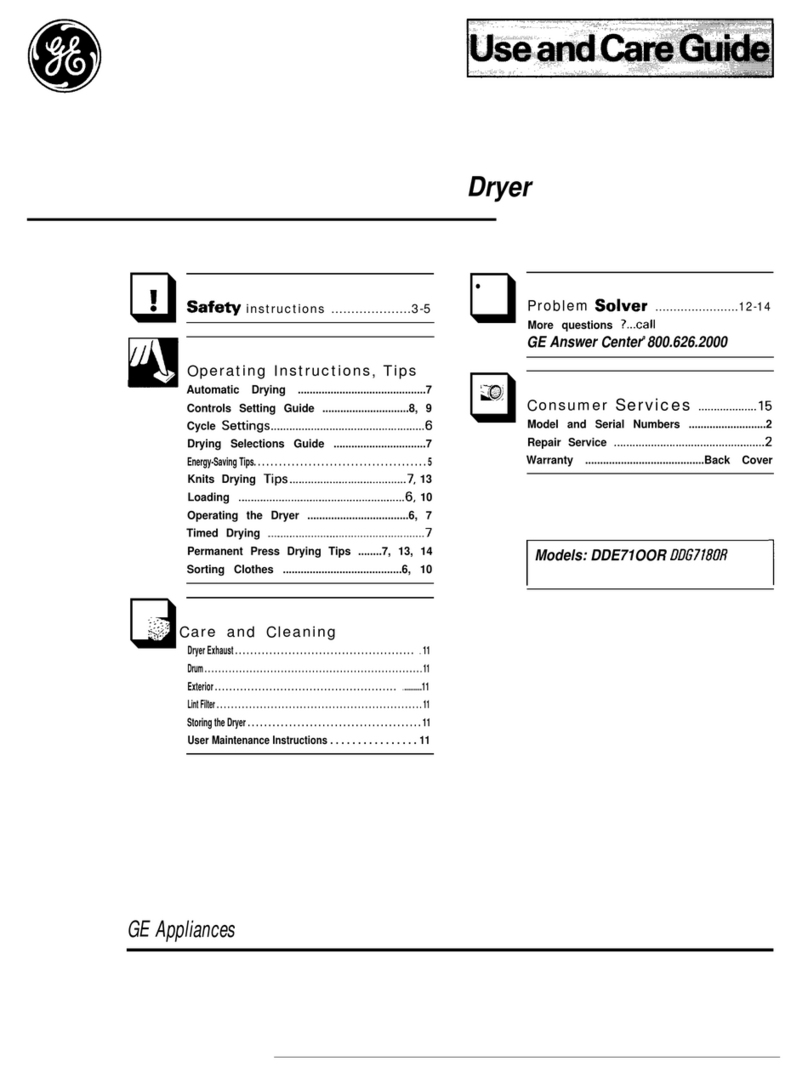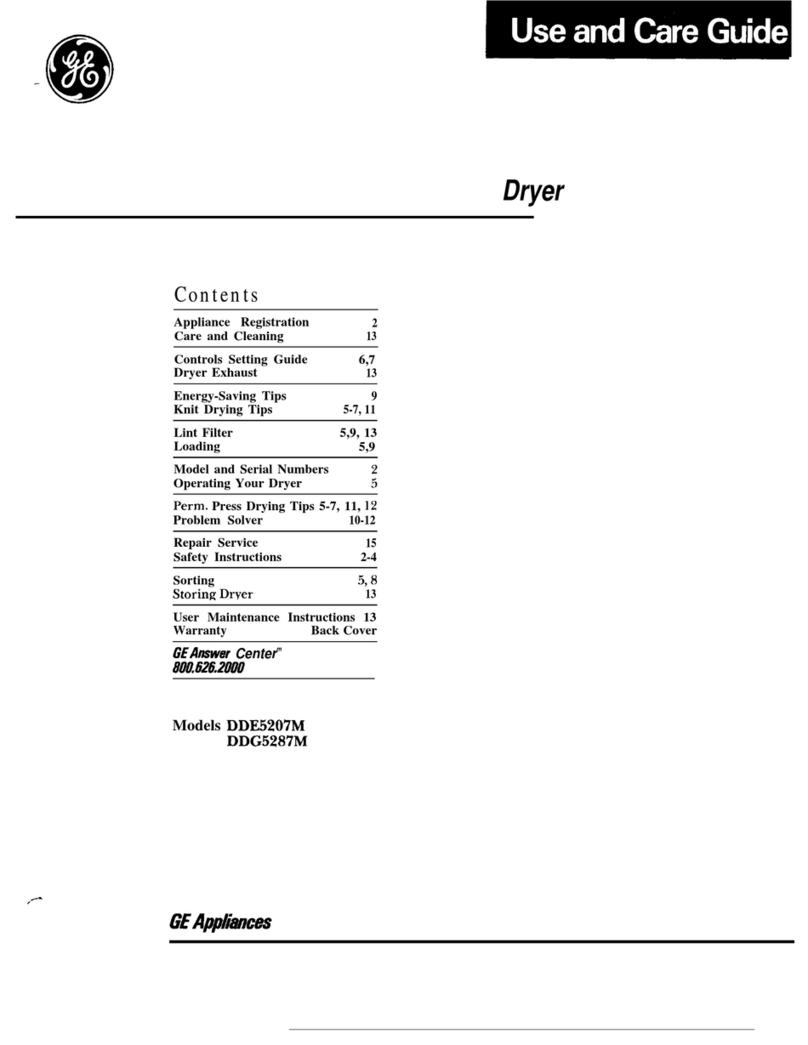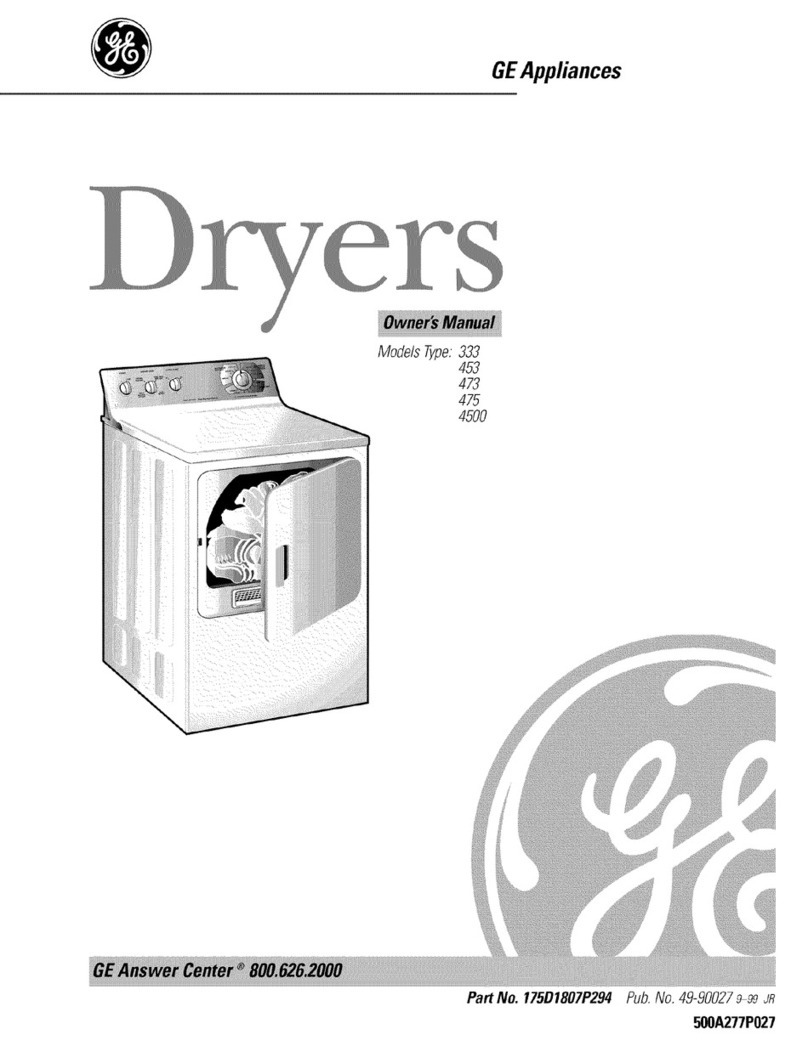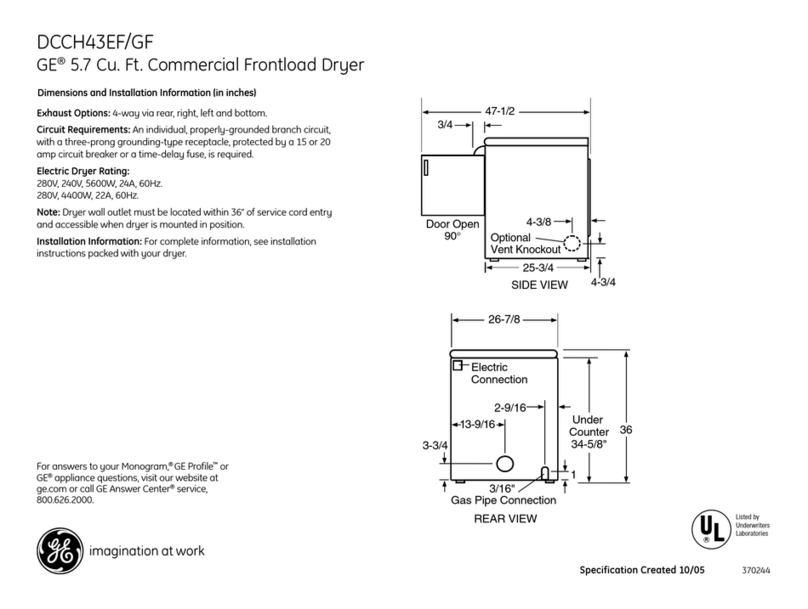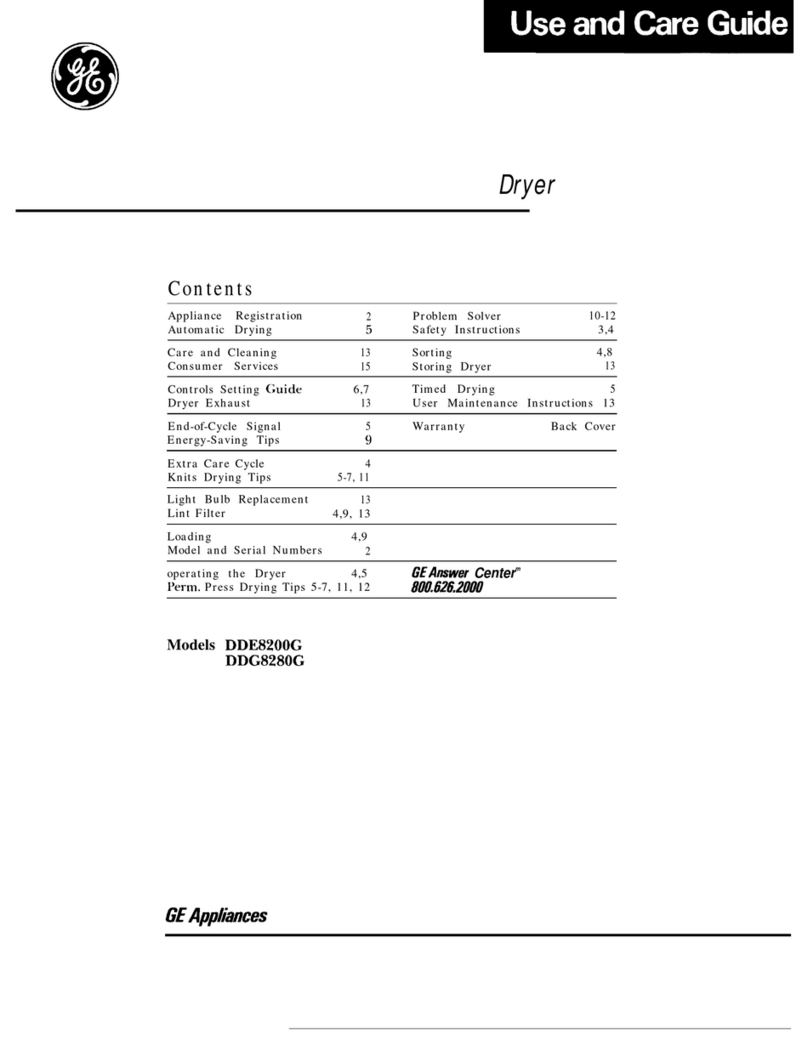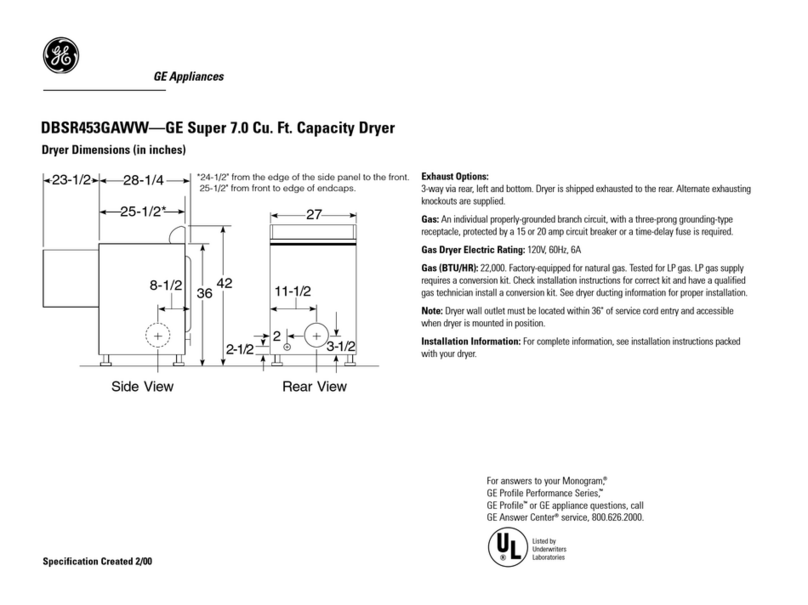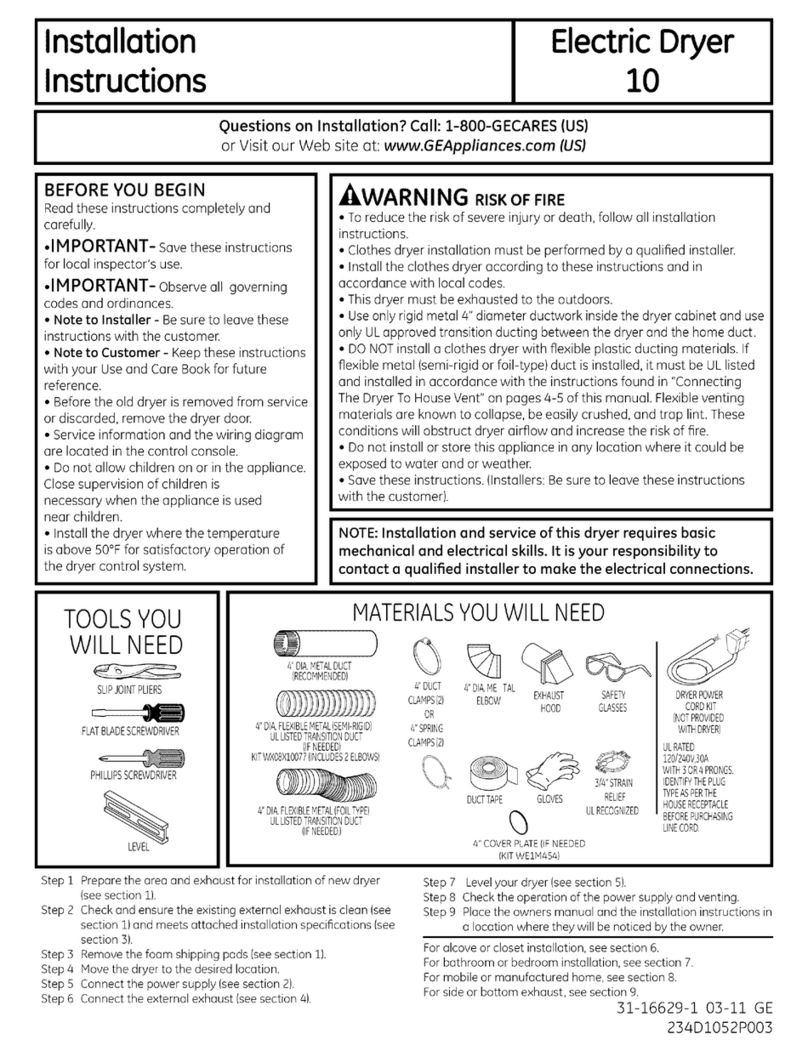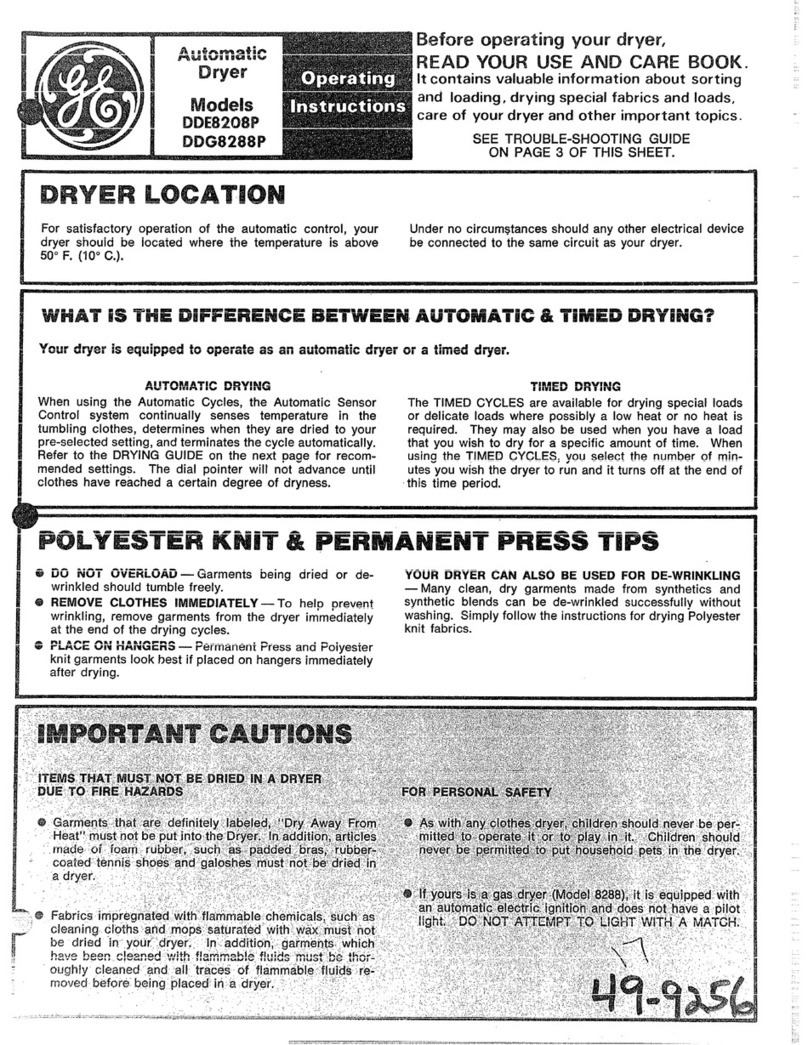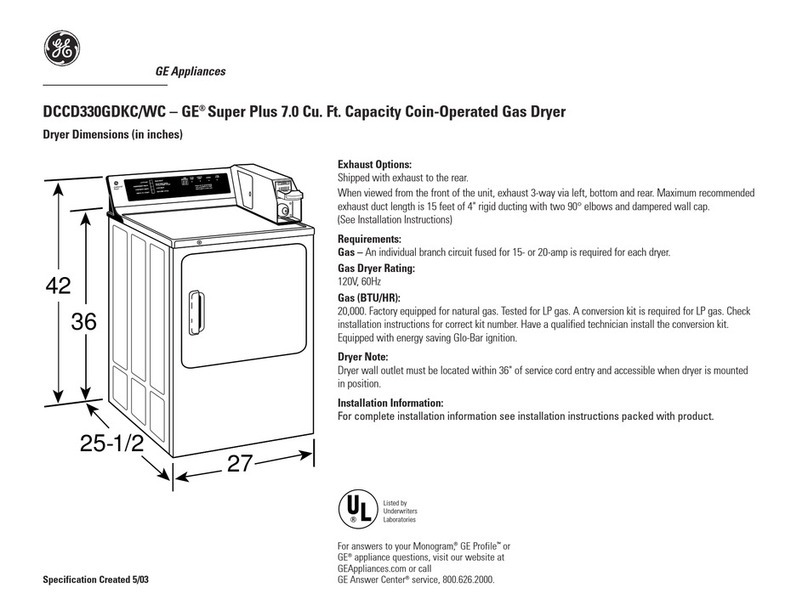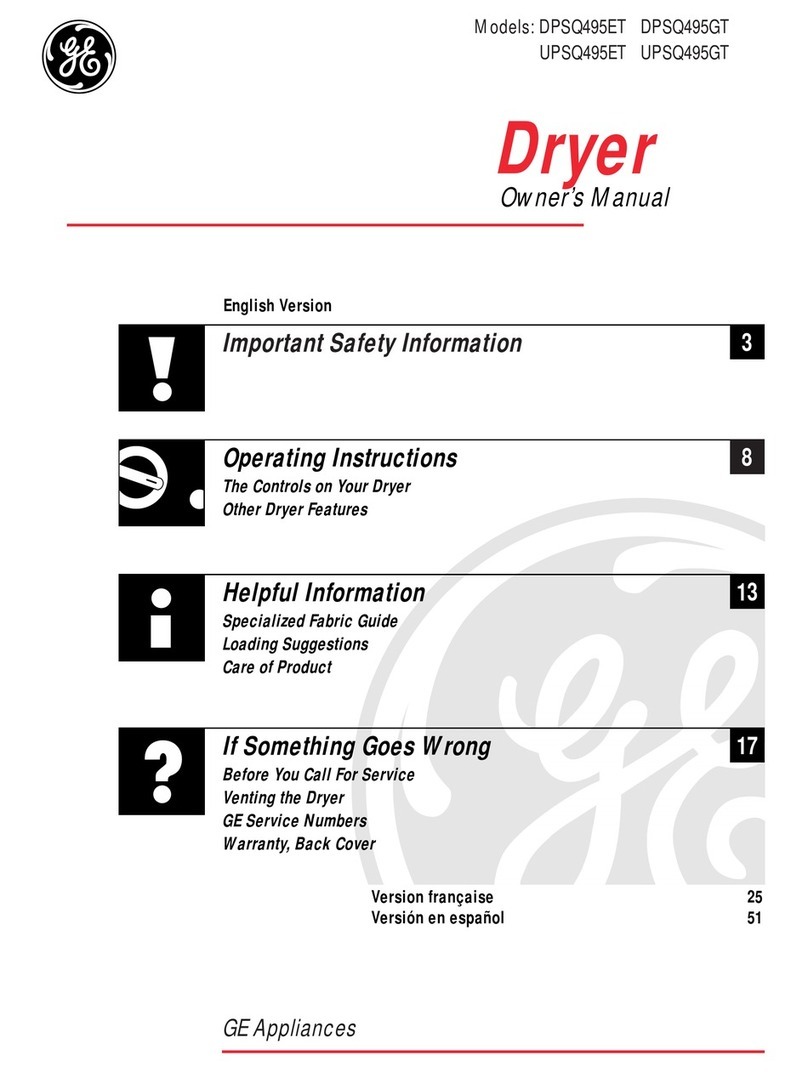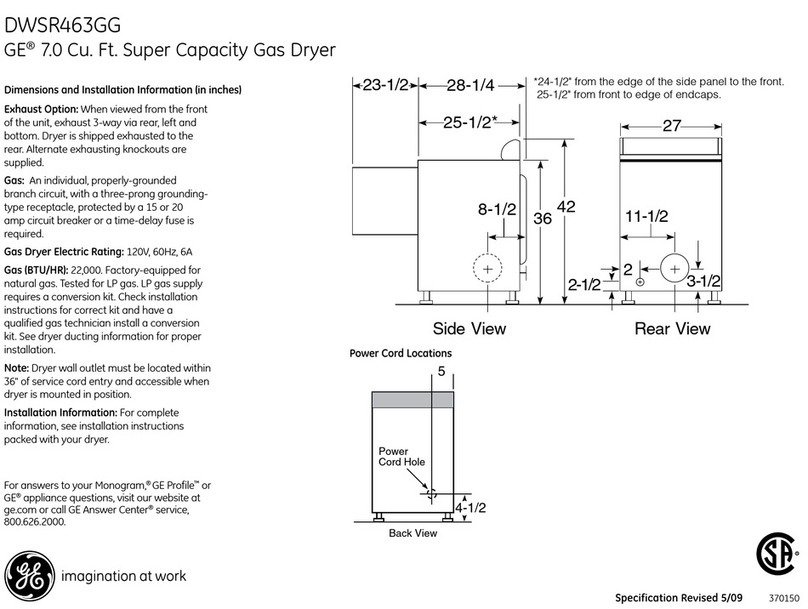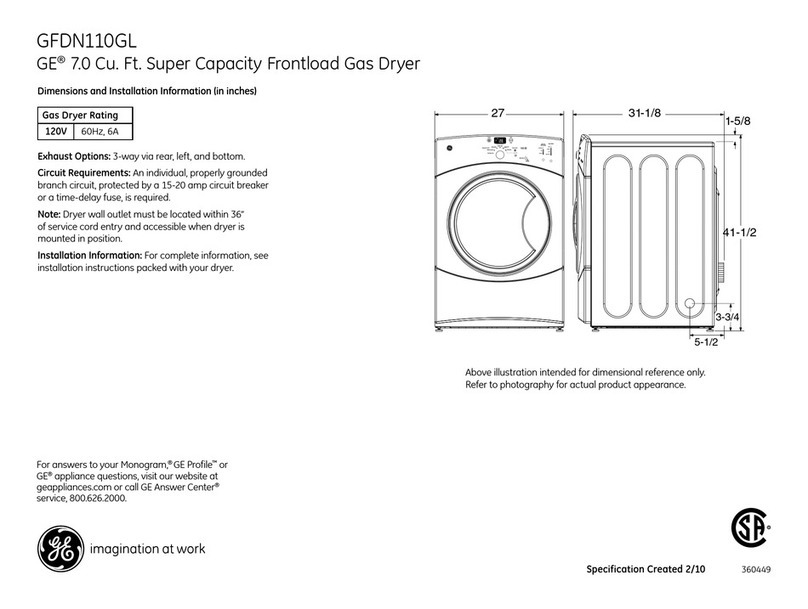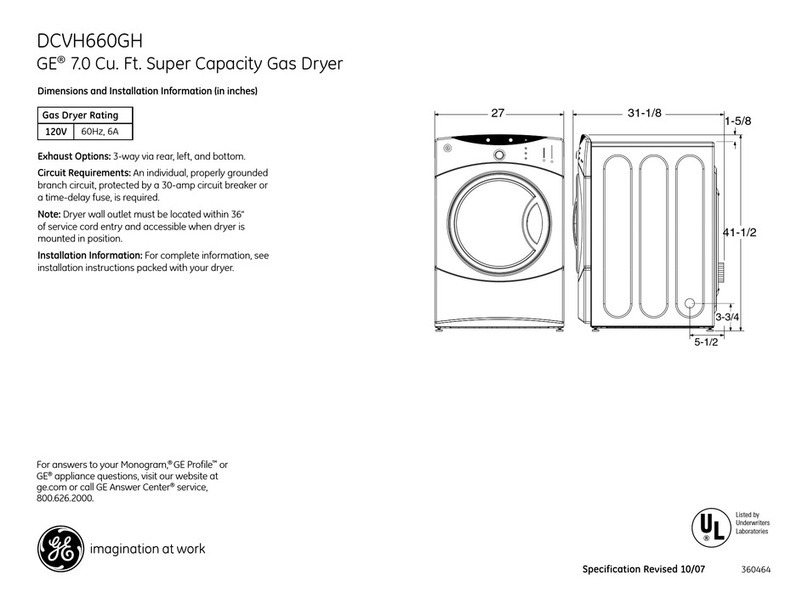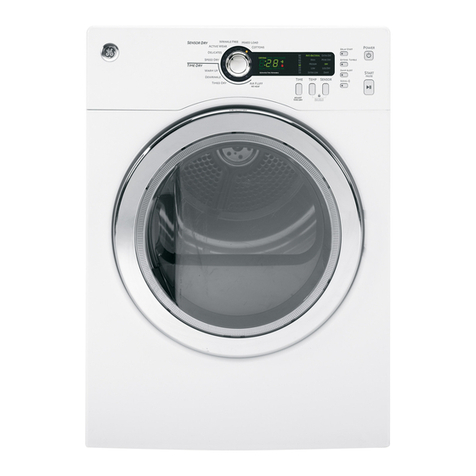• ExhaustDuct-See Installation •
Instructions. Useonly rigid metal
orflexible metal 4" diameter
ductwork inside thedryer cabinet
orfor exhausting to theoutside.
USEOFPLASTIC OR OTHER
COMBUSTIBLE DUCTWORK
CAN CAUSEA FIRE.
PUNCTURED DUCTWORK
CAN CAUSEA FIREIF IT COL-
LAPSESOR BECOMESOTHER-
WISERESTRICTEDIN USEOR
DURING INSTALLATION. •
• Do not dry articlescontaining
rubber, plastic, or similar
materials (suchaspadded bras,
tennis shoes,galoshes,bath
mats,rugs,bibs, babypants,
plasticbags,pillows, etc.) as
thesematerials maymelt or
burn. Also, somerubber
materials,when heated, can
under certain circumstances
produce fire byspontaneous
combustion.
• Do not store items that may
burn or melt (such as clothing,
paper material, plastics or
plastic containers, etc.) on top
of the dryer during operation.
• Garments labeled "DryAway
from Heat" or "Do not Tumble
Dry" (such as life jackets contain-
ing Kapok) must not be put in
your dryer.
Do not wash or dry articles that
have been cleaned in, washed
in, soaked in, or spotted _mth
combustible or explosive
substances (such as wax, paint,
oil, gasolir_e, degreasers, dry-
cleaning sc,lvents, kerosene, etc.)
which may ignite or explode. Do
not add these substances to the
wash water'. Do not use these
substances around your washer
and/or ct_zer during operation.
Any article on which you have
used a cleaning solvent, or
which conl;ains flammable
materials (such as cleaning
cloths, mops, towels used in
beauty salons, restaurants,
or barber .,;hops, etc.) must
not be placed in or near the
dryer until all traces of these
flammable liquids or solids
and their tumes have been
removed.. There are many
highly flammable items used
in homes such as acetone.',
denatured alcohol, gasoline,
kerosene, some household
cleaners,, some spot removers,
turpentines, waxes, wax
removers and products
containing petroleum distillates.
5






